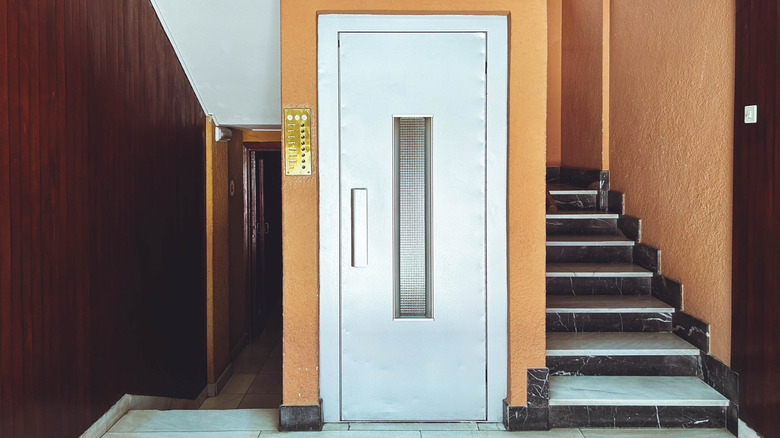The Big Difference American Tourists Will Notice About Elevators In Europe
You may have noticed some unexpected size differences in European buildings and hotels, like smaller rooms, beds, and bathrooms, but particularly, smaller elevators. While many elevators in Europe are big enough to accommodate a large wheelchair and maybe one or two more people, in America, you're more likely to see elevators big enough to hold a stretcher along with other people. (Believe it or not, the United States — New York City, specifically — even has a museum inside a repurposed elevator shaft called the Mmuseumm.)
However, you may also have noticed that Europe seems to have more elevators in places that America doesn't, like smaller buildings and hotels. There is a good reason for the prevalence of European elevators, according to Stephen J. Smith, the founder and executive director for the Center for Building in North America. He published a guest essay in The New York Times in 2024 mentioning that a big reason for this is the cost. Smith explains, "A basic four-stop elevator costs about $158,000 in New York City, compared with about $36,000 in Switzerland." That is a huge difference, and he said that more floors make the cost difference even more apparent. Cheaper elevators mean even smaller buildings can have them in Europe.
The differences between elevators in the United States and Europe
More expensive elevator-building costs in the U.S. means that older hotels that were around before the Americans with Disabilities Act (ADA) was passed in 1990 may choose not to have them. Some low-rise hotels may even be exempt from installing them. (If not having an elevator affects you as a traveler with mobility issues or as a senior traveler, ask for accessible ground-floor lodging. It's always worth checking for this before you travel.)
Part of the reason for the difference in costs is that, in Europe, the process of building elevators is standardized. On the other hand, states and even individual cities in America may have their own ordinances and codes to adhere to, which can change what's required for installing an elevator. Plus, in the U.S., essential upkeep like maintenance checks and repairs can be more expensive. Another contributing factor is that there are unions in America that govern elevator work. To make matters even more difficult, there is a ban on pre-assembled elevators (which are common in Europe), and instead, technicians have to install them on-site.
In addition to the size difference, there is something else you may notice in a European elevator. In Europe, the ground floor is either marked as "G" or "0." The next floor up is floor "1," which in America would technically be floor "2." Again, it's something to ask about in a hotel if you're really looking for ground-floor accommodations for any reason (or if you're avoiding it). Oddly enough, some buildings in both America and some Western European countries may not have floor 13; instead, they opt to call it something like "12A" or skipping it altogether because of the traditional fear that the number 13 is bad luck.

